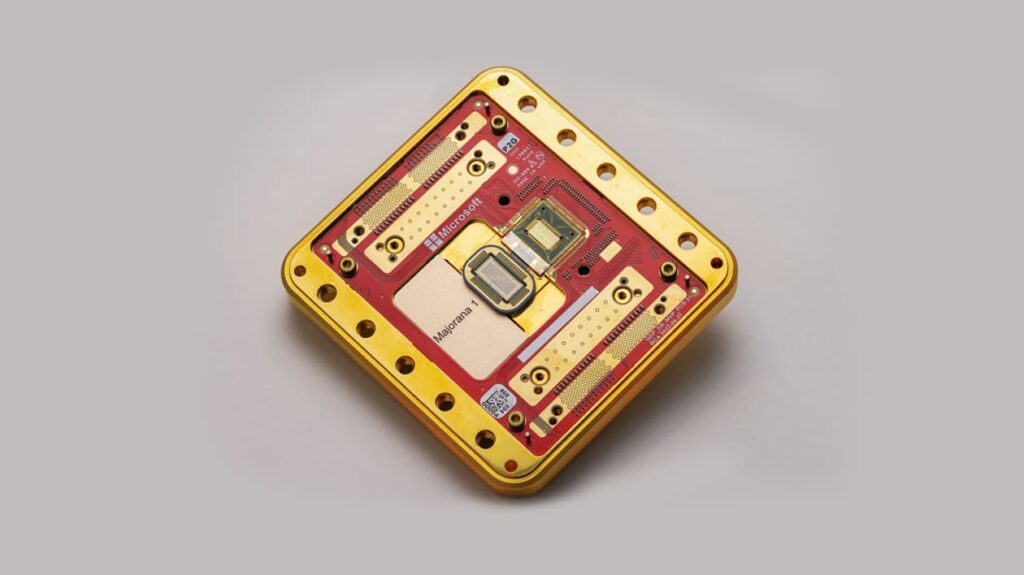Here’s the translation into American English:
Each tech giant is advancing with its own approach to a technology that promises to revolutionize medicine, security, and industry, but is still in the experimental phase.
Quantum computing is no longer just a distant promise reserved for scientists and elite laboratories. Google, Microsoft, Amazon, and IBM are engaged in an intense technological race to be the first to build a large-scale functional quantum computer capable of solving problems that are impossible for traditional computers.
The stakes are high: from discovering new drugs to breaking encryption systems, along with more accurate climate models or new materials for the aerospace industry, quantum computers could forever change the way we tackle the most complex challenges of our time.
The Quantum Promise: What are Qubits?
Unlike traditional bits (0 and 1), quantum computing is based on qubits, units that can represent multiple states simultaneously thanks to phenomena such as superposition and quantum entanglement. This property could allow for parallel calculations on an unimaginable scale compared to classical computing.
But there is a catch: qubits are extremely unstable, sensitive to even the slightest environmental noise, and their behavior is difficult to control. As more qubits are added, errors multiply, making the task of scaling quantum systems even more complex.
Microsoft: Topological Qubits with Majorana 1
Microsoft has taken a different route: topological qubits, a theoretical category of qubits that are more resilient to error. Its chip Majorana 1, unveiled in February, uses an exotic state of matter—neither solid, liquid, nor gas—to create qubits that retain information even if a part fails.

This more theoretical approach, which is less replicated in laboratories, could offer significant advantages if its viability is confirmed. However, many experts agree that Microsoft still needs to prove that its results are solid, although its paper in the journal Nature has generated moderate optimism in the scientific community.
Google: Willow and the “Below the Threshold” Leap
Google, for its part, has unveiled Willow, a quantum chip that has surprised many with its ability to reduce errors as more qubits are added, a phenomenon that historically occurred in the opposite direction. This feat—known as “below the threshold”—could pave the way for real scalability.

According to Google, Willow solved a problem in five minutes that would take the world’s most powerful supercomputer 10 septillion years, although the exercise is purely theoretical, and the challenge remains to demonstrate it with practical applications.
Amazon: Ocelot and Quantum Error Correction
Amazon Web Services (AWS) has also made its move with Ocelot, a prototype that improves quantum error correction efficiency by up to 90%. Based on “cat qubit” superconducting qubits— inspired by Schrödinger’s cat experiment—Ocelot is built using processes from conventional electronics, which could facilitate large-scale production.

While there is still a long way to go, experts like Troy Nelson, CTO of Lastwall, believe that Ocelot represents “a significant leap forward”, although the complexity of its architecture presents new reading and control challenges.
IBM: Condor and a Modular Approach
IBM, a pioneer in this field for decades, introduced Condor in December, its most powerful quantum processor, and Heron, a smaller but more stable chip. The company is focusing its efforts on modularity: connecting multiple smaller chips to form more robust quantum computers.

IBM’s approach prioritizes error mitigation over direct correction, a strategy that has shown good results on a small scale but will need to adapt to avoid losing efficiency at scale.
Who is Ahead?
According to Sankar Das Sarma, a theoretical physicist at the University of Maryland, the technologies from Google, Amazon, and IBM use more conventional methods based on superconducting qubits, whereas Microsoft is exploring an alternative path with topological qubits, a more experimental approach that may offer greater long-term stability.
Despite the progress, all experts agree that quantum computing is still in the laboratory phase. “We are still far from a fully functional quantum computer,” warns Scott Crowder, vice president of IBM. “Excessive hype can backfire and create disappointment before the real potential materializes.”
Interestingly, beyond the tech giants, there is a growing ecosystem of startups and private equity firms that are also exploring alternative pathways to quantum computing. Companies like IonQ, Rigetti, Pasqal, Quantinuum, and Quantum Circuits, among many others, are working with disruptive technologies that could change the game. In such an emerging field, it cannot be ruled out that one of these young firms could make a significant leap and surpass the current leaders, reconfiguring the global quantum landscape.
Conclusion: A Revolution Advancing Step by Step
Quantum computing promises to transform entire industries, from medicine to cybersecurity, but it won’t happen overnight. Each company is advancing with its own approach, facing colossal technical challenges like error correction, qubit stability, or system scalability.
And while headlines talk about spectacular feats and theoretical records, the true quantum revolution still needs time, precision… and many more tests. The only clear thing is that the race is on, and anyone—whether a tech giant or a visionary startup—could pull off a surprise.
Reference: Business Insider

